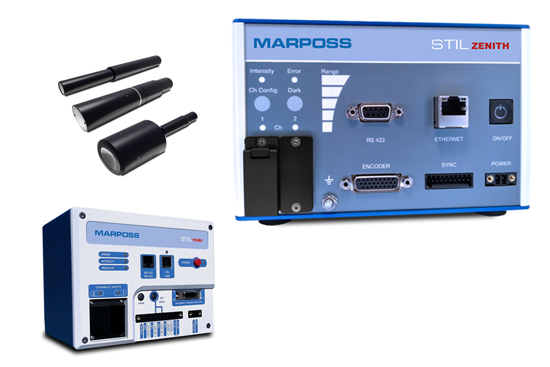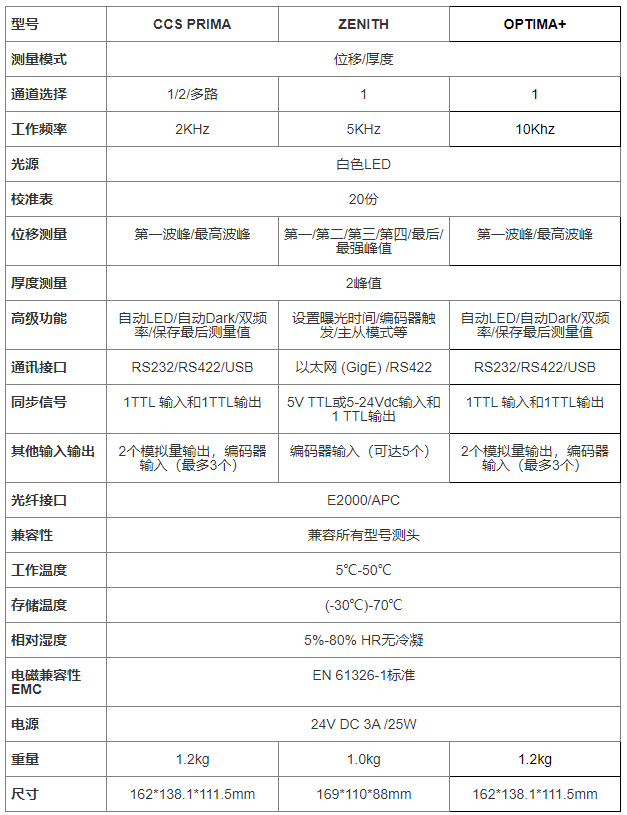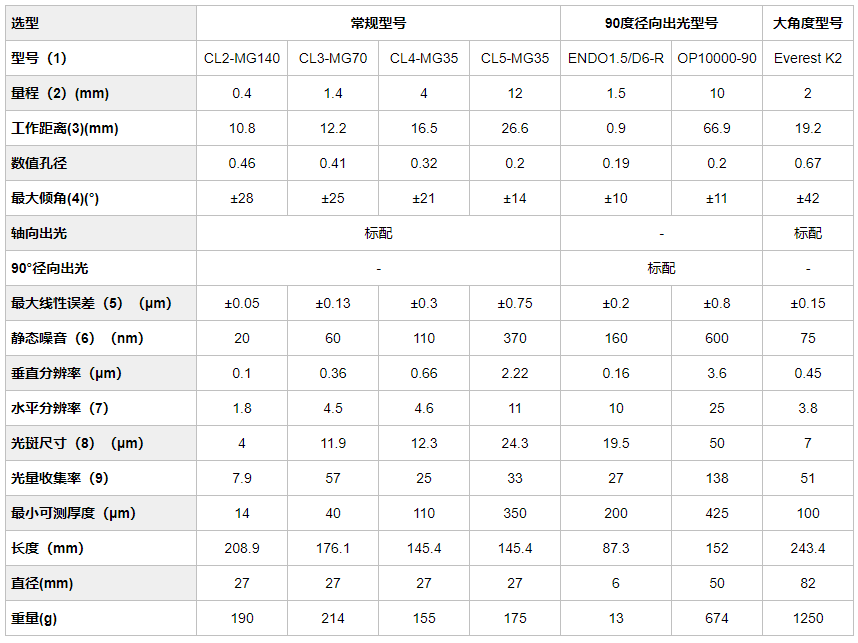STIL spectral confocal sensor
The STIL spectral confocal sensor provides nanoscale, up to 10KHz Z-direction height data.
The sensor is equipped with a controller, fiber optics and measuring head. According to the actual measurement scenario, the controller provides single-channel, dual-channel and four-channel options, and the measuring head can also be configured according to requirements such as range and resolution. By optimizing the configuration of the controller and measuring head, more economical, powerful and stable measurement capabilities can be output for industrial applications.
PRIMA/ZENITH/OPTIMA+ controller
· 1/2/4 channel selection  · Measurement frequency 2Khz/5Khz/10Khz
· Measurement frequency 2Khz/5Khz/10Khz
· LED light source automatic adjustment
· Displacement/thickness dual mode
· Digital and analog output
· Synchronous reading of external digital encoder
· Support ±42° large inclination angle measurement head and 90 degree radial measuring head
Controller technical specifications

Measuring head technical parameters

Note:
(0) This table only lists some models, please refer to the product manual for all models;
(1) The data is obtained when configuring a PRIMA controller;
(2) The range value is obtained when configuring a specific controller. Under normal circumstances The range can be adjusted appropriately, but it may affect the measurement performance;
(3) The working distance refers to the distance between the top of the measuring head and the starting point of the range. This data is obtained when the PRIMA controller is configured. Usually the CL2, CL3 and CL4 models may There is a deviation of ±3%, and the CL5 model may have a deviation of ±6%;
(4) ***Inclination angle refers to the extreme angle value when measuring a specular reflective surface, and the angle can reach 87° when measuring a diffuse reflective surface;
(5) Data The encoder with 1nm accuracy is used for comparative calibration. When the sensor measures the distance, the maximum error is within the entire measurement range. This data is obtained immediately after calibration. The setting conditions for this data are: specific measurement frequency, 0° inclination angle, and internal average 10 times;
(6) Static noise (SN) refers to the completely static sample measured at the middle of the range. RMS noise value, the two SN values in the table include one unaveraged and one 10 times averaged. These values are ***acceptable values. This value is measured after calibration of the measuring head and is noted in the factory report. The SN value determines the vertical resolution of the sensor.
(7) Horizontal resolution is the 10%-90% conversion distance obtained when measuring sudden change luminosity. This value is measured at the middle of the measuring range;
(8) This data is calculated with the focus point at the middle of the measuring range, and the starting end of the measuring range There is a difference of about 10% from the spot value at the end;
(9) The light collection rate refers to the energy collected by each measuring head when measuring the same sample, and the data is a relative unit value. In order to prevent data saturation when measuring highly reflective samples, a low light collection rate measuring head should be selected; when measuring diffuse or low reflective samples, in order to avoid a lower signal-to-noise ratio, a high light collection rate measuring head should be selected;